| کد مقاله | کد نشریه | سال انتشار | مقاله انگلیسی | نسخه تمام متن |
|---|---|---|---|---|
| 4269680 | 1610847 | 2015 | 10 صفحه PDF | دانلود رایگان |

IntroductionThe decline of testosterone has been known to be associated with the prevalence of erectile dysfunction (ED), but the causal relationship between sex hormones and ED is still uncertain.AimTo prove the association between sex hormones and ED, we carried out a prospective cohort study based on our previous cross-sectional study.MethodsWe performed a prospective cohort study of 733 Chinese men who participated in Fangchenggang Area Males Health and Examination Survey from September 2009 to December 2009 and were followed for 4 years. Erectile function was estimated by scores of the five-item International Index of Erectile Dysfunction (IIEF-5) and relative ratios (RRs) were estimated using the Cox proportional hazards regression model.Main Outcome MeasuresData were collected at follow-up visit and included sex hormone measurements, IIEF-5 scores, physical examination, and health questionnaires.ResultsMen with the highest tertile of free testosterone (FT) (RR = 0.21, 95% confidence interval [CI]: 0.09–0.46) and the lowest tertile of sex hormone-binding globulin (SHBG) (RR = 0.38, 95% CI: 0.19–0.73) had decreased risk of ED. In young men (aged 21–40), a decreased risk was observed with the increase of FT and bioavailable testosterone (BT) (adjusted RR and 95% CI: 0.78 [0.67–0.92] and 0.75 [0.62–0.95], respectively). Total testosterone (TT) (RR = 0.89, 95% CI: 0.81–0.98) was inversely associated with ED after adjusting for SHBG, while SHBG (RR = 1.04, 95% CI: 1.02–1.06) remained positively associated with ED after further adjusting for TT. Men with both low FT and high SHBG had highest ED risk (adjusted RR = 4.61, 95% CI: 1.33–16.0).ConclusionsHigh FT and BT levels independently predicted a decreased risk of ED in young men. Further studies are urgently needed to clarify the molecular mechanisms of testosterone acting on ED. Luo Y, Zhang H, Liao M, Tang Q, Huang Y, Xie J, Tang Y, Tan A, Gao Y, Lu Z, Yao Z, Jiang Y, Lin X, Wu C, Yang X, and Mo Z. Sex hormones predict the incidence of erectile dysfunction: From a population-based prospective cohort study (FAMHES). J Sex Med 2015;12:1165–1174.
Journal: The Journal of Sexual Medicine - Volume 12, Issue 5, May 2015, Pages 1165–1174